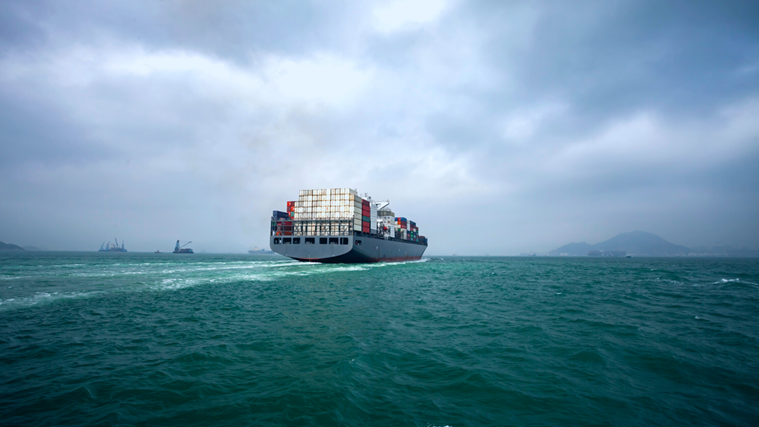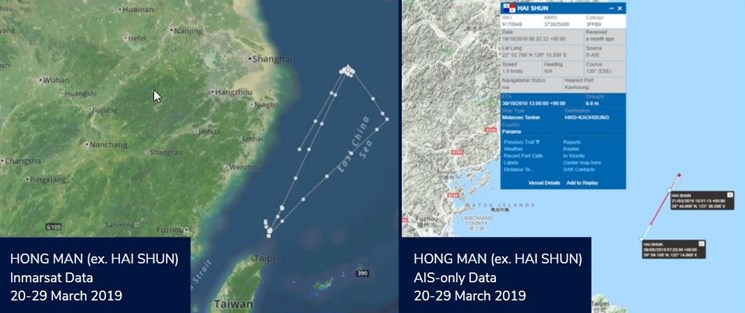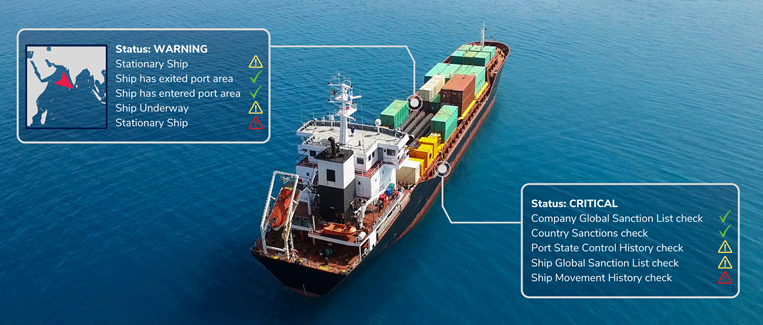Real-time persistent tracking forms a best practice cornerstone to ensure immutable and affordable regulatory compliance.

With the maritime industry considered by global regulators as the key artery for sanctions evasion, a critical need has developed for all stakeholders to enforce persistent ship tracking and transparency. As circumstances evolve, risk exposure will fluctuate, but one thing has remained clear: being proactive and keeping on top of regulatory exposure should not involve guesswork, uncertainty, and liability.
Tracking with certainty for a full understanding of your associated vessels and their movements now underpins regulatory compliance. However, understanding the capabilities, limitations, and implications of the type of vessel tracking data and analytics tools that are at your disposal can be challenging. This article will explore what regulators expect from those involved in the maritime industry and its associated supply chains, the importance of AIS from a regulatory standpoint, the associated risks of relying solely on AIS, and the solution presented by persistent tracking.
What do regulators expect?
Ensuring comprehensive regulatory compliance can be a complex and expensive process, however regulators have provided guidance to assist companies in ensuring that they have robust measures in place. Fundamentally, having an internal sanctions compliance program, understanding who & what you should be looking at, and employing persistent, high quality tracking solutions are essential.
In recent advisories issued by the US and UK regulators, precise guidance on the measures required to address illicit shipping and sanctions evasion practices have been identified. Out of these measures, the need for stakeholders to establish AIS best practices and contractual requirements based on their individual risk assessments is emphasised as being the key component to combating sanctions evasion.
In cases where a ship does go dark, two points must be examined: where the vessel was when it last transmitted its position, and how long it has been dark for. If a vessel is not transmitting in or around a known high-risk zone, and if it has been dark for a substantial amount of time, this will indicate their overarching risk potential and should be avoided, managed, and / or self-disclosed according to your internal risk management planning.
At the beginning of 2020, OFAC also announced that it was significantly expanding the requirement for US persons (and in some circumstances non-US persons subject to OFAC’s regulatory jurisdiction when dealing with US dollar transactions) to report blocked property, unblocked property, or rejected transactions to OFAC, which would be the case for vessels with a sanctions nexus to the OFAC SDN list.

Back to Basics: AIS is essential, but no longer enough
Per the US advisory, OFAC has made it absolutely clear that a change of mindset and processes throughout the industry is required.
In a perfect world, AIS would provide effective and sufficient ship identification and tracking. However, in reality, AIS equipment can fail, be switched off from onboard a ship, and be deliberately spoofed and falsified from onboard or ashore. In addition, correctly operating AIS transmissions can be missed by satellite-AIS service vendors, due to signal collision in high-density shipping areas. Fundamentally, AIS has vulnerabilities that may result in the accidental or deliberate loss of AIS ship position data – creating a “dark” ship.
What should happen when a ship goes dark, in terms of determining absolute risk, is where maritime technology providers take different approaches to best practice in relation to what analytical level to police any apparent anomalies and accidental or deliberate sanctions circumvention.
Persistent Tracking: Tracking your vessels with certainty when AIS goes dark
With regard to best practice, persistent and consistent tracking is key to meeting the compliance measures laid out in the various guidance advisories. A ship reporting its position in a regular and consistent manner is ostensibly a good ship, allowing other checks and balances to be considered around ownership, flag, etc.
Pole Star’s persistent, hybrid tracking is a specialised, patented process integrated within our PurpleTRAC sanctions screening & compliance solution, which over several years has been successfully deployed across many banks and commodity trading firms, progressive flags, and leading shipping companies to de-risk their shipping operations and ensure compliance.
Principally, it combines two data services: Inmarsat complemented with AIS (both terrestrial and satellite) to effectively overcome AIS information loss and dark ship false positives to provide vessel location with absolute certainty, in real-time. This combination allows for accurate ship location data to be determined even when AIS data is unavailable. The solution provides tracking redundancy and allows for the elimination of what at times can be a significant level of dark ship false-positives occurring with the use of AIS alone.
The complete failure of dual-system hybrid-tracking is highly unlikely outside of deliberate deception, therefore, the persistent tracking of ships should be part of any compliance program. As such, working with Pole Star as your specialist technology partner will protect against inadvertent sanctions misdemeanours and contribute to building a safer, more secure, and compliant supply chain.
With PurpleTRAC, not only do our users have data from 1,600 watchlists and enforcement actions at their fingertips, but they are able to adjust their risk parameters and be alerted if a vessel shows reporting gaps.

So, where does this leave best-practice?
In short, there are three things that should be standard practice.
First, ensuring that AIS best practices have been established and are contractually binding for stakeholders. Secondly, if a vessel you are engaged with goes dark for a material amount of time, investigating the vessel movement history and gap analysis should be your next step. Fundamentally, a significant gap in transmissions is enough to warrant alarm bells for the ship in question. Finally, regulators want to see demonstration of best efforts, not guesses and estimations. As such, using persistent tracking and screening in combination with a robust internal risk management system can prove demonstration of best efforts while also significantly reducing regulatory exposure.
Get in touch with us now at [email protected] to learn more about how we can assist you in staying on the right side of regulators.